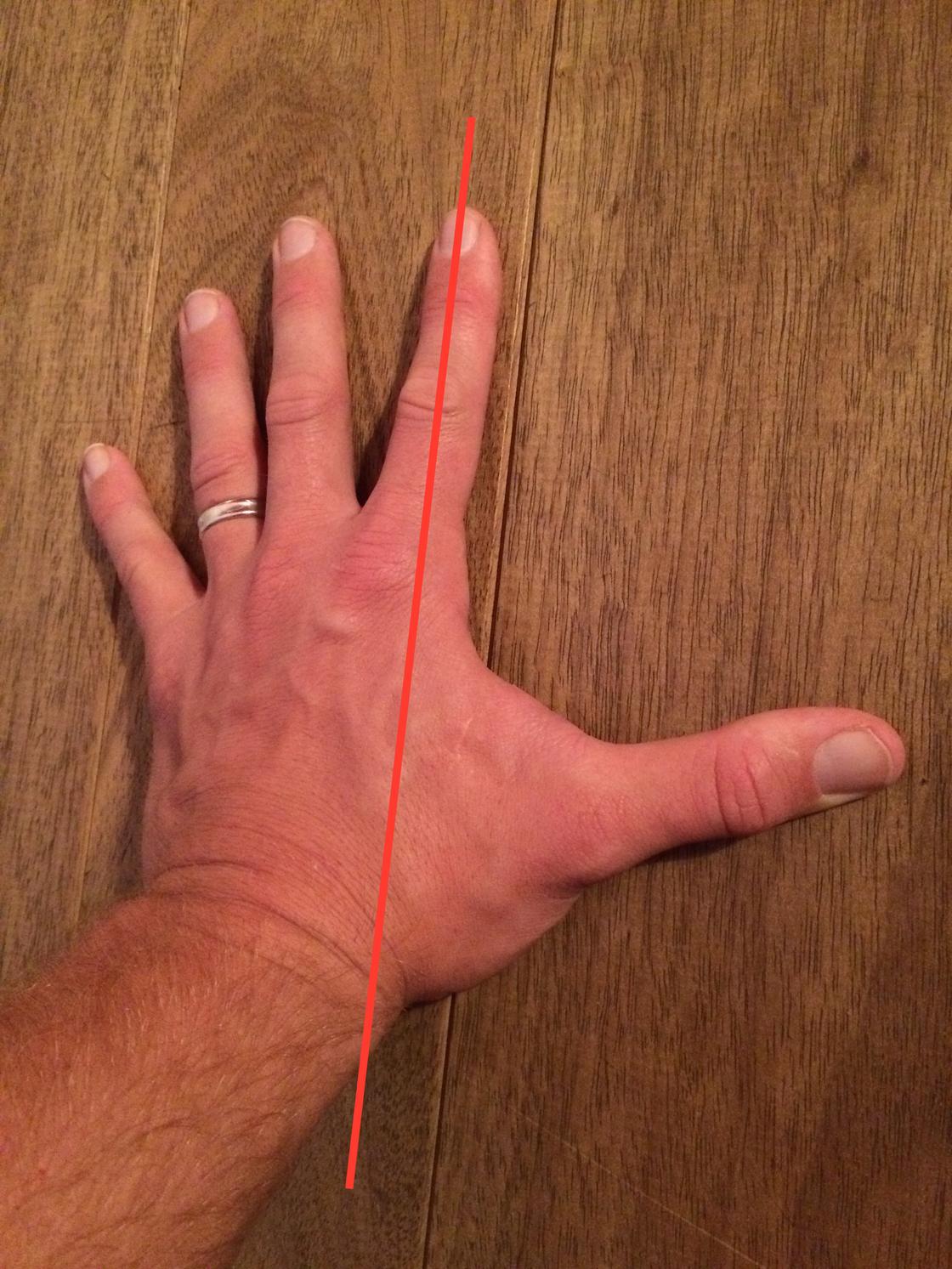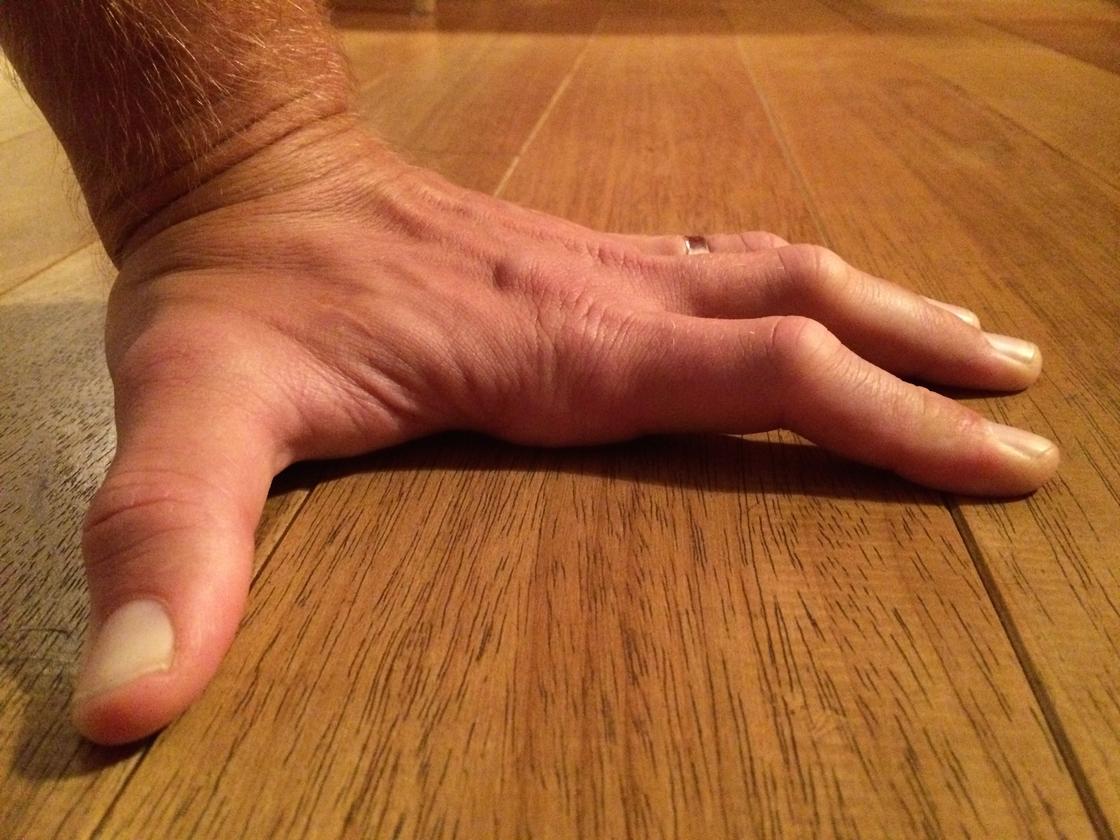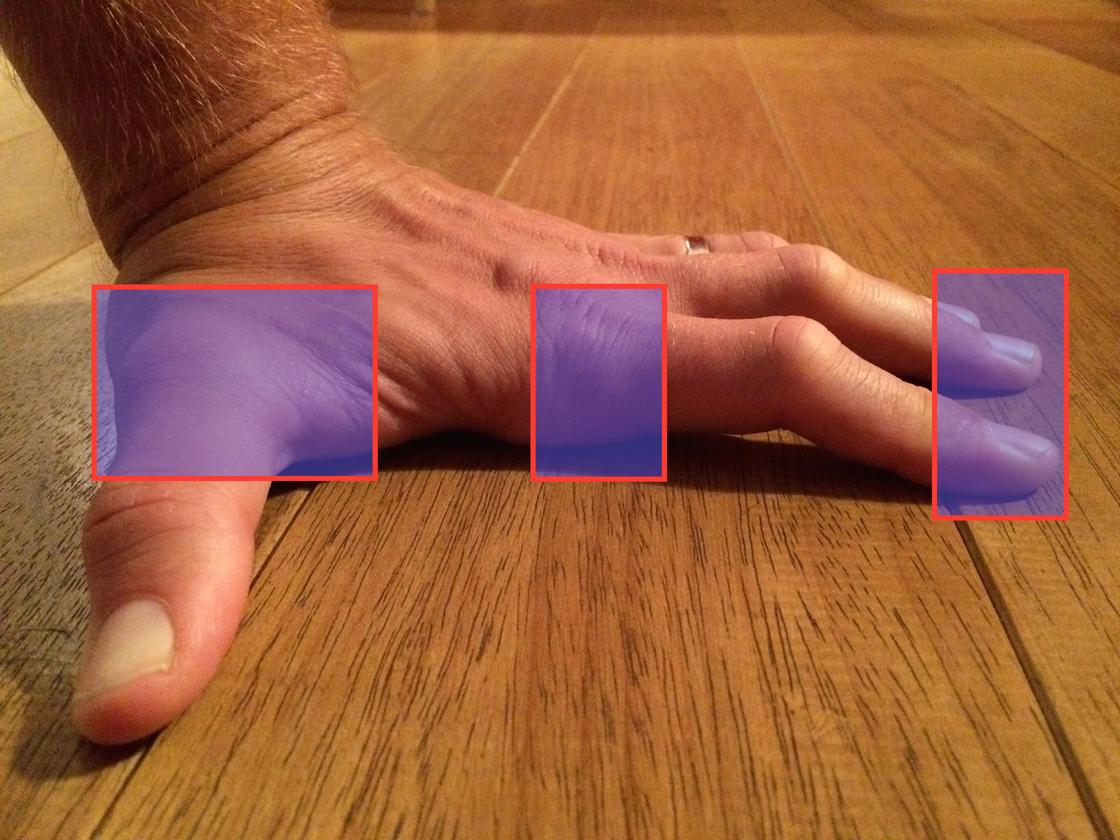Position of hands in a handstand is quite important. Where and how are hands placed on the floor logically affects how the handstand will look like. So, in what way should we place our hands on the floor? And where? And why? The following text is for beginners who don’t know how to do it. Advanced learners know the story all right.
Span
Ideally, your hands in a handstand are positioned under your shoulders. That means, palms as wide as shoulders. It’s the same as if you stand on your feet – if you put your feet too close together, you have smaller base and weaker balance. If you put your feet too wide, you have a great base but your front-to-back stability is going to worsen (which you can really use in a handstand).
In both cases – too wide or too close – you have to use more muscle strain to hold the position. Therefore it is ideal to start in a position in the width of your shoulders. Check yourself on photos or have someone to help you – I took me almost a year to find out that I was way out of my place, Yuval showed me that my shoulders were not that wide.
Tip
Closer handstand, closer position of hands, is good for having control over the distribution of weight on your hands. If you “press” more on one hand and you have more weight on it then in a close position you’ll fall on the other side.
In a handstand, your wrists are transformed into ankles, elbows into knees, shoulders into hips.
Position of hands
Index fingers are parallel and point forward, logically. The rest of the fingers is spread sideways; try doing a “frog hand”. Fingers spread out are good, giving you a larger base. And there is never enough base in a handstand.

What to lean on
When you put your hands on the floor and do a handstand, kick your legs up or just somehow get up ☺, your fingers will clench into the floor. Imagine you have a paper on the floor and you want to scrunch it but flatwise. Then your hand looks like this.

Hand arch
Such a shape of hand gives you three areas to lean on. The move when your fingers clench into the floor, scrunching the imaginary paper, actually creates an arch in your palm. And remember – in a handstand, your wrists are transformed into ankles, elbows into knees, shoulders into hips. So not only have these three spots to be stronger and get use to weight, but also the labor is similar (and an effort to balance your limbs).
Anyway, there is no such thing as balance but attendees of “Handstand I” workshop understand that pretty well.
Those three areas are:
- Fingertips
- First finger joints
- Palm heel

The more you train and experience a handstand, the more you will start to “play” with it and explore different positions – sometimes wider, sometimes closer. Just like with everything else, there is no best position, it depends on context, situation, daytime, and alignment of the Moon.
Howgh.
